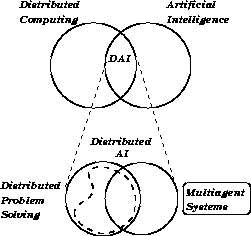|
Thomas
Nickles has argued,
[R]ather
like Polanyi (1958, 1966), Kuhn suggested that the scientific community
operates surprisingly like a medieval guild:
(1) It is a community of
practitioners who posses expert knowledge.
(2) The community sharply distinguishes itself from the nonexpert,
lay public, including other expert scientific communities.
Boundaries are maintained by the high costs of admission and
expulsion, enforced by professors, journal editors, peer reviewers, and
other "gatekeepers."
(3)
There is a standard training procedure for novices in a given specialty
area. They are trained on the
same problems, using the same or similar textbooks and laboratory
exercises. At advanced stages,
the training typically involves something akin to a master-apprentice
relation.
(4) The knowledge is
imparted by example far more than by rule.
(5) Hence, the crucial knowledge that distinguishes an expert from
a well-read novice remains largely tacit, inarticulate, and more
knowing-how that knowing-that. It
involves teaching by showing and knowing by doing.
(6) Strong personal commitment to the imparted tradition is
expected. Being too critical
of community presuppositions and practices threatens both the community
and one's own career prospects. (146)
A guild-like community of science points to some of the
following aspects of model-based reasoning:
-
Science is
fundamentally a set of shared activities instead of a body of knowledge.
Models occur as social practices.
-
One has to
learn the framework of observation, the accepted methods, and to
internalize the skills and procedures necessary to carry out the field's
aims.
-
Training
stresses an emphasis on working problems built around exemplars with
concrete solutions.
-
Problems
are only problems within a given framework; puzzles operate within a
set of rules.
-
To not
observe these approaches is to be outside the status group.
-
Contrast
sets are essential to the disciplines. One is especially learning to see
family resemblances across problems.
-
The nature
of the model always assures something like a bounded search for what is
otherwise unknown.
-
The search
is often one of an "open texture" (Friedrich
Waismann), that is not everything can be verified or even completely
defined in advance; concepts cannot foresee all the possible ways they may
be used or tested.
-
The
normal process of research is one of refinement via multiple cycles of
further enrichment.
-
Conceptual
testing relies on "graded structures" (Eleanor Rosch) in which
some examples possess better family resemblances than others. This results
in taxonomies.
-
Taxonomic
practice has incommensurable paradigms embedded in it.
-
However,
new taxonomies often share aspects of the older taxonomies; therefore,
comparison can take place, though evaluation of the others always occurs within
a particular paradigm.
-
Failure
of the current practice/model to solve problems opens up the chance for a
rival practice to supplant it, but the new model has to offer research
problems and possibilities for it to be adopted.
-
A
counter-model is only taken seriously when the current one can no
longer answer a large nexus of problems.
Discussion
Questions
-
Is
it accurate to compare the scientific
process to joining a guild? Why or why not?
-
How
has Kuhn appropriated the late Wittgenstein's insights into family resemblances?
-
What
distinguishes Kuhn's model of science from the standard one?
-
Can a
model be separated from the practice that gave rise to it?
-
What
distinguishes an anomaly from a counter-instance?
-
Are
different taxonomies incommensurable?
-
Based
on the above model, how might Kuhn's argument explain the failure of Intelligent
Design movement to gain acceptance in the larger scientific community?
Nickles, Thomas. "
Normal
Science: From Logic to Case-Based and Model-Based Reasoning." Thomas
Kuhn ed. Thomas Nickles.
Cambridge
:
Cambridge
UP, 2003. 142-177.
|

